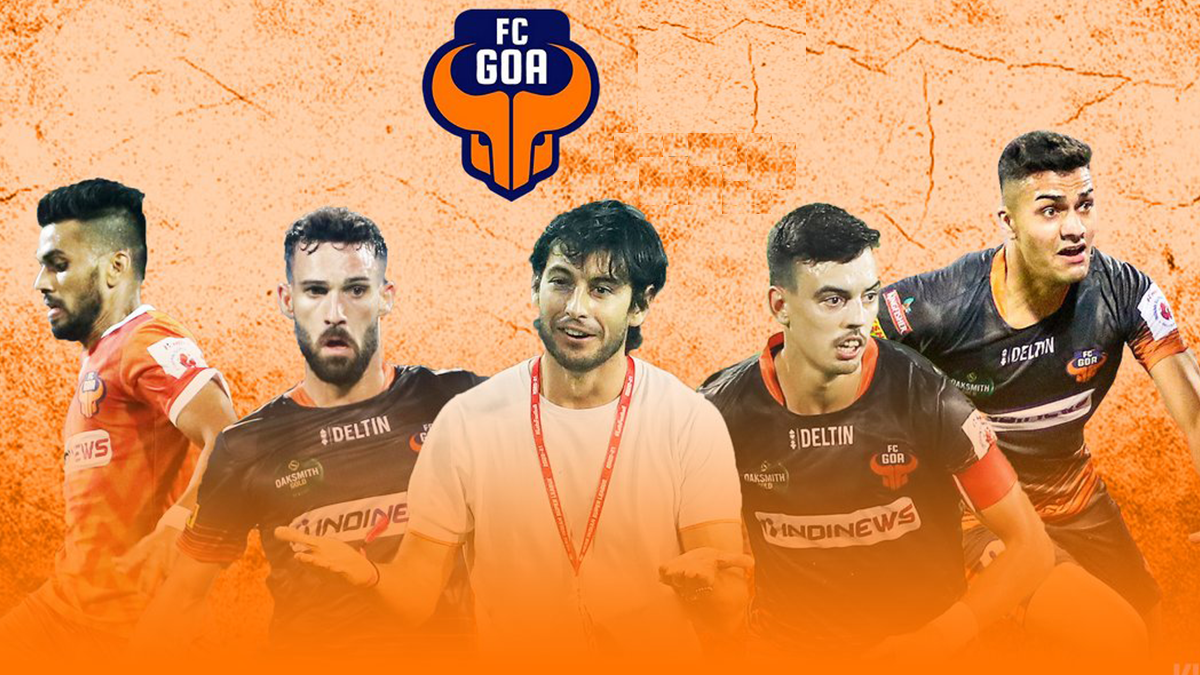FC Goa or Football Club of Goa is Goa’s premier football club. The club is run well, invests in youth and is supported by a passionate, football-loving public of Goa.
Giving it to the opposition is what their unofficial tagline “Dii tekka” stands for. And that’s exactly what they do when playing football.
The style that FC Goa plays is considered attacking, possession-based and positive. The evolution of this style can be split into three eras – the Zico era, Sergio Lobera, and the current Juan Fernando era.
Leon from ItsGoa is a football fan and writes this piece dedicated to his love – FC Goa…
FC Goa logo and its meaning
The FC Goa logo is a combination of Goa’s state animal- the gaur or Indian bison- and a shield, which symbolises strength, attack and defence, all of which epitomise FC Goa. The logo personifies the character of Goan football and the fundamentals of the team.
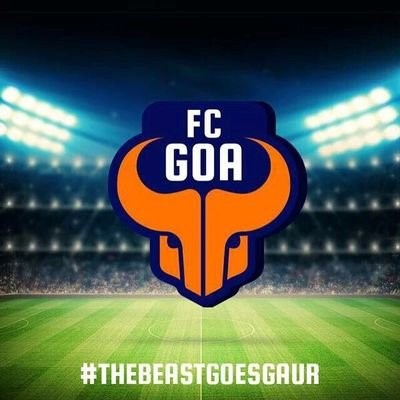
Where do FC Goa play their home matches?
The Fatorda Stadium, officially known as the Jawaharlal Nehru Stadium, is the home ground of FC Goa. Established in 1989, it has also acted as the home ground of Hero I-League clubs Dempo SC, Salgaocar FC, Churchill Brothers SC, and Sporting Clube de Goa.
FC Goa’s History Begins By Signing a Football Legend
The club was launched on the 26th of August, 2014. The club’s logo depicts Goa’s state animal – the Gaur. The club plays its home games at the Fatorda stadium in Margao.
As per the announcement made earlier within the year 2014 by the All India Football Federation (AIFF) that it’s inviting bids for ownership of nine cities across India to have a eleven in association with IMG-Reliance, one among India’s biggest industrialist Venugopal Dhoot of Videocon along side Dattaraj Salgaocar and Shrinivas Dempo decided to bid for the Goa franchise.
They won the bidding for FC Goa and the club was launched in August 2014 at Goa Marriott Resort & Spa in Miramar. Later in September 2014, Virat Kohli was unveiled as of the co-owner of the club, and Varun Dhawan as their brand ambassador. FC Goa became the primary Indian club to launch its channel named ‘FC Goa TV’ on Videocon D2H.
The club appointed Brazil & Flamengo legend, Zico, as Head Coach in 2014. Robert Pires was signed as the marquee player for season 1.
When I heard that my beloved state of Goa, was going to have a state-named football club, coached by an absolute legend like Zico, I was elated.
Zico is often considered a deity at Flamengo. Although I never saw him play live, I have watched countless videos of his sheer mastery over a dead ball.
Zico could play as a No.10, and would have thrived as a false-9 if he played in the last decade. He perfected the no-look pass, much before we started adoring Ronaldinho for doing it.
The technique for striking freekicks accurately came from the balance he maintained through his standing foot. His head would remain still. He was capable of striking the ball through the inside and the outside of his right foot.
I have watched some amazing freekick takers during my time namely, Juninho Pernambucano, David Beckham, Roberto Carlos, Lionel Messi, and Matt Le Tissier (who I believe was a great volley-er as well), etc. But, Zico, Platini, Rivelino, Maradona, are all part of a distinguished bracket of elite dead-ball specialists.
The Coach Zico era begins
The 14 games that season saw FC Goa win 6, draw 4 and lose 4. A penalty shootout defeat to Atletico de Kolkata ended their season.
The style of play was based on speedy wingers attacking channels, with a ball-playing playmaker assisting a powerful/quick forward.
The second season under Zico was starkly better. The team dominated the league stage and finished on top with 25 points. The team went onto reach the final, where they were beaten by Chennaiyin FC.
The style of play was similar to the previous season, but with Lucio handling the center-back role, there was more stability at the back.
The third and final season of Zico saw the team perform poorly. FC Goa finished bottom of the group, with Zico not renewing his contract further.
FC Goa’s samba style
Coach Zico’s 2015 team was the most successful. The team reached the final of ISL 2015. If you look at his starting lineup for the final (below), the one thing that easily stands-out is the physical strength.
With Lucio and Arnolin emitting strength in pairs, the team was easily capable of handling strong strikers. Laxmikant Kattimani replaced Jan Seda as the No.1.
The wingbacks – Pranoy Halder and Narayan Das, were strong and quick. Moura and Jofre in the middle-added stability and tenacity. Mandar and Romeo played as pure wingers.
Dudu and Ranty Martins would alternate, with Rafael Coelho playing more as a striker than a center-forward.
The team took the 2015 season by storm. Dominating games against Delhi Dynamos, Northeast United; including thumping wins over ATK and the famous 7-nil versus Mumbai City FC.
In defense, both center-backs would easily handle through balls that were played against them. The marking is usually man-to-man, meaning the wingbacks would negate any opponent wingbacks/wingers running into the channels, with the center-backs sticking with the opponent strikers.
Moura would drop deep, usually supporting the center-backs when possession was lost. The wingers, Mandar & Romeo, worked overtime trying to support the wingbacks.
During the transition, the team immediately pressed. Both wingers would bomb forward, touching the bi-line. Either the wingers crossed the ball at first time, or tried pulling away their respective markers.
This allowed space for the wingbacks to make overlapping runs, with Jofre getting into spaces left vacant by the out-of-position defenders. Moura would venture deep forward as well. His skills would
The wingers – would touch the byline and spring accurate crosses for taller strikers like Ranty Martins and Dudu Omegbemi to score.
Arnolin popped up to score numerous times from corner kicks. Jofre’s freekicks were accurate. The two strikers worked in tandem, holding up the ball, for teammates to get into spaces. Reinaldo, Dudu, Haokip all scored hattricks.
Coach Sergio Lobera’s era begins
In 2017, FC Goa signed Sergio Lobera Rodriguez as their new Head Coach. He is a Spaniard who previously coached FC Barcelona’s C-team in 2006.
His other stints include being the manager of CD San Roque de Lepe, AD Ceuta, UD Las Palmas, and Moghreb Tetouan. During a brief stint, Coach Lobera was the assistant to the late Tito Vilanova at FC Barcelona.
“Johan Cruff painted the chapel, and Barcelona coaches since merely restore or improve it” – Pep Guardiola
FC Goa’s team
Coach Lobera knew that to play like any Barcelona team, he would first need to get the right players. To started that by working on the spine.
Jose Mourinho, in his first season as Manchester United (yeah, I needed to get ManU mentioned as I have been supporting them since 2001 through thick and thin), signed 4 players.
He already has a world-class David De Gea at the base of his spine. His Chelsea of 2005 consisted of a spine that comprised of Cech-Terry-Makelele-Lampard-Drogba. His Manchester United spine was made up of DeGea-Bailly-Pogba-Mkhitaryan-Zlatan.
Similarly, Coach Lobera set about building FC Goa’s spine. The result? Nawaz-Pena-Jahouh-Edu-Coro.
The promotion of Nawaz as goalkeeper makes sense. He did this because he wanted a goalkeeper who could initiate attacks.
To build from the back, a goalkeeper must be calm when playing from the feet. Nawaz can play with both feet and that gives Coach Lobera a chance to initiate attacks from the back.
Pep Guardiola signed Claudio Bravo from Barcelona for $17 million. Not happy with Bravo’s calamities goalkeeping, he ordered the signing of Ederson for approx. $35 million.
The addition of Murtada Fall at the back provides strength and knocking down long balls. His flicked headers have resulted in goals for both Manvir Singh and Hugo Boumous, this season.
Ahmed Jahouh plays the Busquets role to perfection. He is an excellent crosser and can play long balls with aplomb.
Add to that, his strength when dealing with long balls, his ability to sniff out danger and his leadership qualities make Jahouh one of the best in the IPL.
Jahouh’s lack of pace is a concern. But Lenny Rodrigues ensures the midfield is not overrun. Coro’s goals ensure FC Goa is never short on them.
Edu Bedia. Brandon Fernandes and Hugo Boumous ensure the ball is well during possession. The more FC Goa can keep the ball, the more confident the team plays.
FC Goa’s formation
Coach Lobera immediately set about establishing his identity at FC Goa. Six new Spanish players were signed. Two of those Spaniards – Manual Lanzarote and Edu Bedia, both played for FC Barcelona’s youth teams.
Why did Coach Lobera think of sign players who are associated with FC Barcelona? The answer is simple – possession.
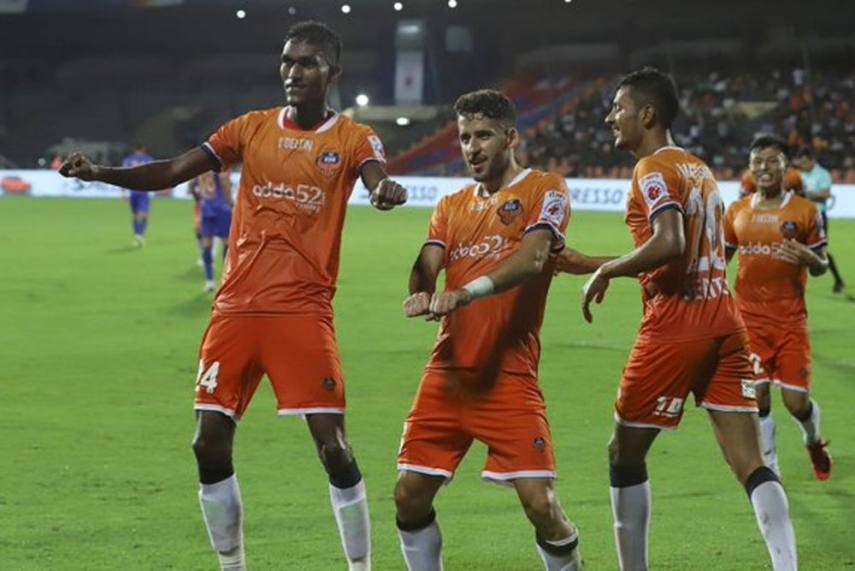
When talking about possession, I think of Pep Guardiola’s highly successful Barcelona side. For Pep, possession not just meant keeping the ball, it also meant using possession to break an opponent’s press.
Pep would create triangles and rhombuses, which allowed every player to have more options to pass the ball to. The two center-backs would spread apart and receive the ball from the goalkeeper (usually Victor Valdes).
Sergio Busquets played as a pivot. Both Villa and Pedro played so deep and wide, that opponent wingbacks were pinned. If the opponent’s strikers pressed Barca’s center-backs, Busquets would slot in between them to relieve the pressure.
“Playing out with three men at the back is very useful because it conditions the response of your rival. Even if they press you, it’ll be with their centre-forward and second striker, obliging them to move into a 4-4-2 shape and you can, therefore, over-run them by achieving superiority” – Pep Guardiola
With no strikers and fullbacks to press, the midfield is overrun by Barca’s ball-playing maestros – Xavi, Iniesta & Messi. The midfielders can now either pass the ball to the striker in the middle or pass the ball wide, with Barca’s wingbacks making overlapping runs.
Let’s look at FC Goa’s formation for last night’s game vs Mumbai City FC
This is how Coach Lobera set up his team on paper. A 4-1-4-1 that looks nothing like Pep’s famous 4-3-3 or 3-4-3.
Look again…
The team quickly shifts into a fluid 3-4-3. I will analyze the game in a bit.
FC Goa’s setup
If Marcelo Bielsa is considered the father of footballing philosophies (3-3-3-1), Johan Cruyff also needs a mention for introducing a 3-4-2-1 during the days of a 4-4-2 in La Liga.
“I had short lads like Albert Ferrer, Sergi or Guillermo Amor; players without great physiques but who pampered the ball with their touch and pressed the opposition like rats,” – Johan Cruyff
And whom did Pep play in his team? Messi, Xavi, Iniesta, Villa, Pedro, Alba & Alves. Not many tall players eh?
If you look at Lobera’s team, Coro, Boumous, Bedia, Jacki, etc. Quick and agile players who rely on shorter passes than trying to beat opponents with strength.
FC Goa’s passing
“Football is born in the brain, not in the body. Michaelangelo said he painted with his mind, not with his hands. So, obviously, I need intelligent players. That was our philosophy at Milan. I didn’t want solo artists; I wanted an orchestra. The greatest compliment I received was when people said my football was like music.” – Sacchi
I hear several fans complaining about why the players of FC Goa keep passing the back. We saw that against Bengaluru FC, and we also saw that last night.
The only way a team can break an opponent’s pressing rigidity is via backward passes. FC Goa achieves this by letting Len/Jacki stretch the opponent’s backline.
The moment the bass is passed backward to Nawaz, Jahouh drops deeper, collects the ball and looks for runs made by either Mandar, Brendan, Jacki or Seritan.
With the fullbacks stretched, and the opponent’s midfielders being sucked into the vacant space left behind, FC Goa’s midfield comes to life. The numerical advantage presented to FC Goa gives them time to play through-balls along channels.
FC Goa’s pressing style
When I watch FC Goa press, I think of a similar style deployed by Pep’s Manchester City. I am not saying Coach Lobera tries to use a similar press, but as both managers coached within the shadow of La Masia, I am not surprised with FC Goa’s pressing style.
Now, don’t jump on me. Hear me out. This is what I comprehended after watching FC Goa play. To get an idea of Pep’s pressing, I am forced to pit that against his current super-rival – Jurgen Klopp.
FC Goa’s Investment in Youth
FC Goa U-15
FC Goa U-15 team placed on an excellent display within the Next Gen Mumbai Cup in February
We have seen FC Goa demonstrate possession-based football within the ISL since the past few seasons. But how do they create it happen so smoothly? Well, that is a result purely based on the unique method of training they follow.
They call it ‘maximal training.’ First introduced at the club in 2015, the idea is to work on several aspects of the game at the same time in all training sessions.
This includes technique, tactics, physical and mental aspects that are collectively worked upon in each training drill. Through this, they ensure the players are clear with their communication and decision-making – two core tenets that are vital in one’s performance on the pitch.
Interestingly, this philosophy is followed at each level of the FC Goa pyramid — starting from the grassroots, U-13, U-15, U-18 to the developmental team and of course the senior team.
Now one might wonder how the club implements this philosophy among the age-category teams and especially at the grassroots level. However, at this stage, it’s more about generating an interest about football and learning the core values at the club.
To begin with, development at the grassroots level is the equivalent of sowing seeds at the right time so as to ensure a good reap.
At FC Goa too, kids are nurtured with the sense of football right at the age of 6 to 12. This is where the Forca Goa Foundation — sister concern of the ISL outfit, comes into the picture.
The Foundation aims at generating interest for football among the kids along with developing a basic understanding of the game.
Here, the Junior Gaurs League is something that the club uses as a tool to imbibe a competitive spirit right at the young age. After all, healthy competition helps breed better talent.
From this stage, the kids move up the ladder to more football focused stages — the U-13 team and subsequently the U-15 team. Moreover, with the Centres of Excellence also in place, FC Goa channel the talented prospects into the U-15 team. These are the age groups where a player undergoes natural physical changes. Keeping the same in mind, FC Goa have designed the training regime in such a way to help the players maintain balance between physical as well as mental fitness.
More importantly, it is at this stage the philosophy of maximal training is induced into the players. Further, the club’s training methods are designed in a way keeping in mind the unique characteristics of the players from the region. And the results are there for everyone to see.
For instance, FC Goa U-15s recently took part in the Next Gen Mumbai Cup, along with the U-15 teams of some of the best youth setups not just across the country but the Premier League as well. And boy did the Junior Gaurs leave an impression!
The team succeeded in edging Bengaluru FC and Reliance Foundation Young Champs. But their biggest success was defeating the U-14s of Southampton FC in the final round of the tournament.
Moving on, the players who have till now become well-versed with the club’s philosophy make their way into the U-18 team. Having already been groomed in the maximal training method for years, the transition becomes much easier. Rayan Menezes and Bryson Fernandes are the best examples in the U-18 team currently. Coming through the lower rungs at the club, the duo has progressed right under the guidance of coaches at the U-13 and U-15 levels respectively.
For someone who has been at the club right since the inception, Araujo has enjoyed a lot of success with the team in the past couple of years.
Under his tutelage, the U-18 team qualified for the final round of the Hero Elite League for the third season running. While they reached the semis last time around, this year they raised the bar by qualifying as the league toppers.
When asked the secret behind the success, Araujo credits the maximal training method that allows the players to deal with situations in the best possible manner. This is a stage where FC Goa help players learn to deal with strategies and traits of the opponents. For instance, overcoming strength with a high intensity game and overcoming speed with the ability of game-reading.
FC Goa U-18
FC Goa U-18 team has enjoyed a lot of success in the past couple of years.
Then comes the developmental side — the final stage in which a player gains enough experience so as to move into the senior side. The FC Goa developmental side competes against the top teams in the Goa Pro League including Churchill Brothers, Salgaocar FC, Sporting Goa and Dempo SC. Rubbing shoulders against the top players from the state as well as across the country counts as a great experience for the youngsters in the developmental side.
At this stage, players are required to gain as much competitive experience as they can and the Goa Pro League is a great platform for the same.
This is a typical progress graph of a player at FC Goa before he is promoted to the reserves and subsequently to the senior team. The level of effort put in by the coaches as well as other backroom staff is something that deserves appreciation.
Meanwhile, it is necessary to understand another dimension to youth development at a club. One aspect of youth development is to nurture the players right from the grassroots level.
Another is to scout the existing raw talent and polish it over time using adequate training methods that are in line with the club’s philosophy.

And when it comes to scouting, FC Goa leave no stones unturned in unearthing the best talent to suit its philosophy.
Ultimately, it is the strategic implementation of uniquely designed methods of training that give meaning to development of youth at a club. And with Derrick Pereira at the helm of the youth structure, FC Goa have been assured of success at each level. For someone who knows Indian football inside out, Pereira has been the mastermind behind FC Goa’s perpetual progress towards becoming one of the best youth setups in the country.
By now, we have understood how FC Goa, as a club, have taken a big step by building a solid youth development structure. Young stars like Bryson and Rayan are just a testimony to the talent they can produce in the years to come with due support from their well-designed scouting network. To conclude, by forming one of the best youth development systems in the country, FC Goa are assured of creating a legacy for themselves in not just India but in Asia.
Indian Super League 2021-22
The Indian Super League (ISL 2021-22) is all set to begin on November 19.
The first 11 rounds of fixtures for the season which were announced on Monday. All weekday matches will begin at the usual time slot of 7:30pm, however, on Saturdays with double headers, the first game will be played at 7:30pm (was 5:30pm last season) and the second one will be held at 9:30pm (was 7:30pm last season).

The remainder of the ISL 2020-21 fixtures will be announced in December 2021. Much like last season, all the 115 games will be played across Goa’s three stadiums in a bio-bubble this season too.
Can FC Goa win the ISL 2021?

FC Goa has a significant Indian contingent, as evidenced by their recent win in the Durand Cup under Juan Ferrando.
With the exception of the final few games of the historic tournament, the Gaurs had a team that was entirely made up of Indians, both seasoned, young, and hopeful. The Gaurs will be a formidable opponent in the 2018 season of the Indian Super League, where teams will be allowed to field only four foreigners on the pitch, based on their performance during the campaign.
Let’s take a look at the Gaurs’ Indian contingent and examine their strengths and flaws before they face Mumbai City FC in their first match. When taking a close glance at their lineup, it may appear like the Gaurs are short on players with a well-known name (except a few). However, this is where most individuals go wrong. It doesn’t matter if you have a good name on the squad if you can’t perform on the field. FC Goa has a team that is far and away the most balanced, at least in terms of the Indian contingent and their performance in the Durand Cup a few weeks ago.
Players like Brandon Fernandes, Glan Martins, Seriton Fernandes, and Dheeraj Singh Moirangthem are regulars in the Indian national team, but the squad depth they gain has a huge impact. Youngsters like Muhammed Nemil Vailiyattil, Devendra Murgaonkar, Leander D’Cunha, and Makan Chothe have already surprised Indian football fans in the Durand Cup, and are expected to improve the squad in the ISL as well, under the supervision of Juan Ferrando.
Youngsters like Muhammed Nemil Vailiyattil, Devendra Murgaonkar, Leander D’Cunha, and Makan Chothe have already surprised Indian football fans in the Durand Cup, and are expected to improve the squad in the ISL as well, under the supervision of Juan Ferrando. In the previous edition of the ISL, players like Dheeraj Singh Moirangthem and Devendra Murgaonkar had the opportunity to showcase their abilities; Dheeraj Singh Moirangthem, the goalkeeper, played an excellent brand of football between the sticks, and Devendra Murgaonkar scored a brilliant header to equalise against SC East Bengal.
Although the Indian contingent of the Gaurs is supposed to be strong, it should be remembered that these young players have not yet been put to the test in the Indian Super League. They were able to score goals, run past two or three defenders, sit back and defend in a relaxed manner in the Durand Cup, but they will not be able to do so in the ISL since it is a different ball game. Physical strength (not fitness) is another area where the Gaurs may need to improve before the league begins, as the Indian contingent (mostly midfielders and forwards) can be described as frail when compared to the other 10 clubs.
Juan Ferrando’s squad may also suffer from the lack of a good and reliable Indian centre-back beside a foreigner. With Jorge Ortiz’s injury and Airam Cabrera’s dismal performance abroad, relying solely on Murgaonkar up front could be dangerous. Ishan Pandita’s transfer from FC Goa to Jamshedpur FC may not have had an influence in the Durand Cup, but it could be a source of concern for the 40-year-old Spanish coach in the ISL.
FC Goa Key Players For ISL
FC Goa’s Indian contingent includes a few players who are currently representing India in the SAFF Championship. Brandon Fernandes and Glan Martins, both midfielders, are two players that could be pivotal for FC Goa in the middle of the park. Brandon Fernandes’ deception and passing prowess are commendable. He’s also the team’s official set-piece taker. Glan Martins’ name may surprise some, but his progress under Juan Ferrando since joining FC Goa from ATK Mohun Bagan has earned him the right to be mentioned in this piece. His long-range strike against Mumbai City FC right before halftime is still considered one of the greatest of the season.
His presence and capacity to work hard set him apart from the rest of the FC Goa squad. Saviour Gama, who dazzled in the previous edition of the ISL, would undoubtedly be the third name. In the previous edition of the Indian Super League, his skill in the back four while defending and proficiency when attacking led to the foundation of a young left-back. Last season, he made a total of 101 tackles and scored two goals for the Gaurs.
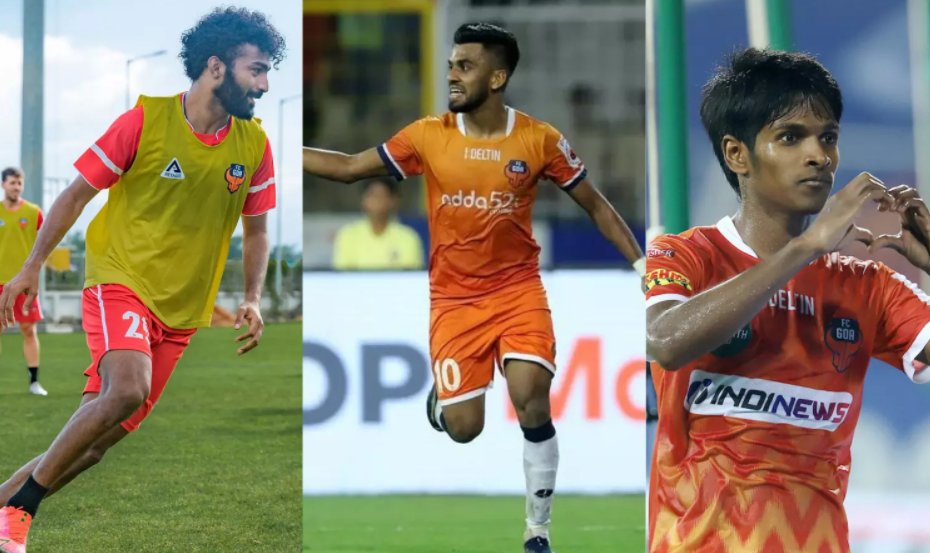
FC Goa Youngsters To Look Out For
Juan Ferrando’s dexterity in grooming fresh talent and exposing their abilities on a larger stage is commendable. Muhammed Nemil Vailiyattil, Devendra Murgaonkar, and Dheeraj Singh Moirangthem would be the players to watch in the 2019 Indian Super League. Muhammed Nemil Vailiyattil, a 19-year-old midfielder who previously trained at a Spanish academy, has attracted notice from fans throughout his time in the Durand Cup. His performance had been outstanding from the minute he entered the game. The midfielder’s abilities are reason enough for Reliance Foundation Young Champs, Kozhikode to scout him in 2015.
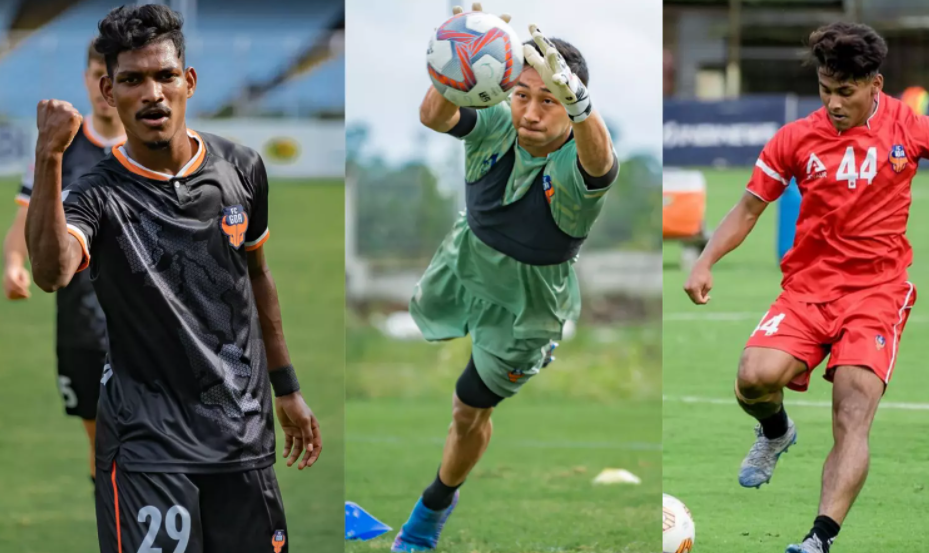
Devendra Murgaonkar, the second name on the list, will have to make an immediate impact on the pitch, since FC Goa does not have many options up front aside from Airam Cabrera. Ishan Pandita has already left the team, and Jorge Ortiz is now injured, so Murgaonkar is anticipated to make the roster of 18. Dheeraj Singh Moirangthem is the last name of former India U-17 goalie Dheeraj Singh Moirangthem, who has been effective in goal for the Gaurs since joining from ATK Mohun Bagan during the winter transfer window. It’s possible that Dheeraj may make the starting lineup in the upcoming ISL.

